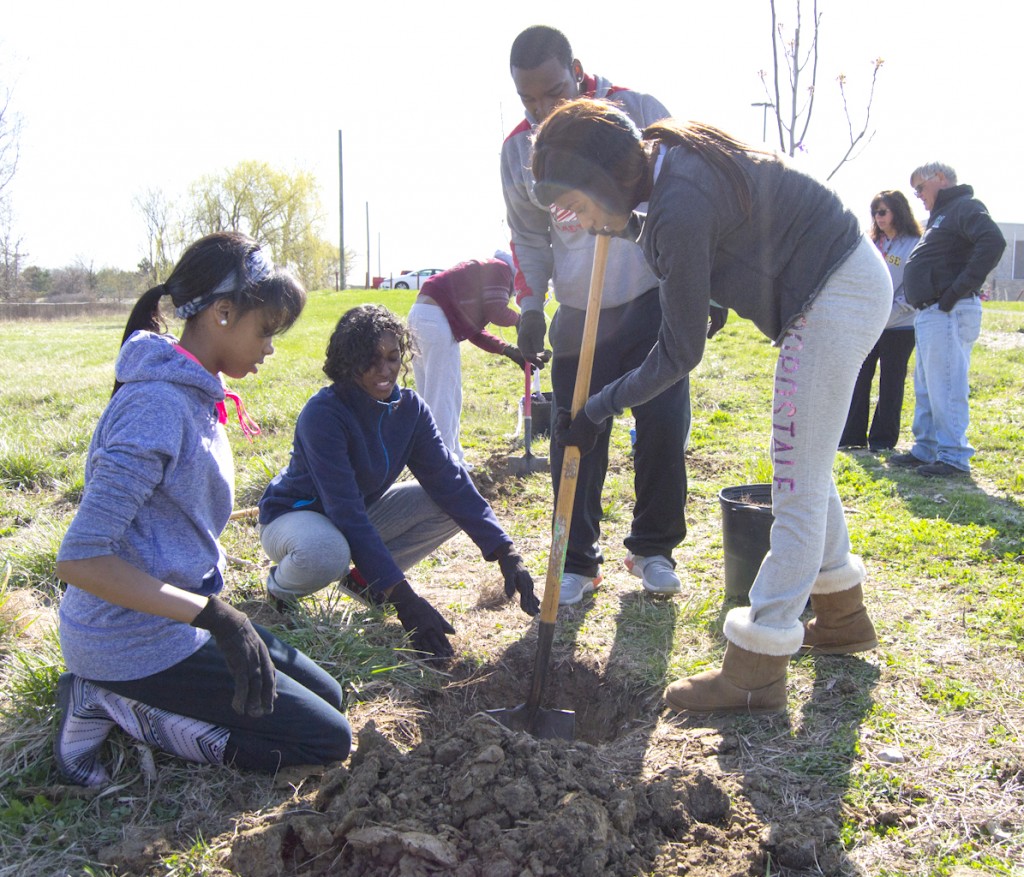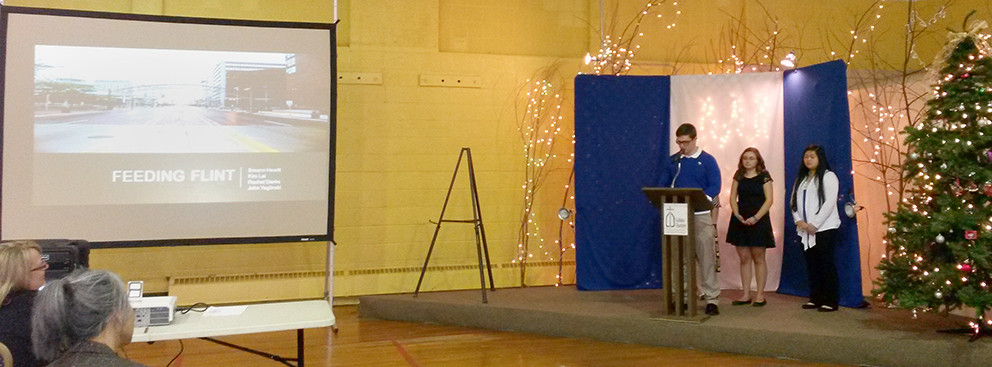By Maria Salinas
The University of Michigan-Flint and the Beecher School District partnership completed the first half of a two part College and Career Readiness Program when 60 kids from Beecher’s junior class were hosted on campus on Wednesday, March 22 as part of the school district’s three day SAT Preparation Boot Camp. UM-Flint students in the secondary education teaching certificate program were key contributors to the success of the SAT Camp which was coordinated by UM-Flint Neff Center staff member, Maria Salinas, and staff from Beecher High School. The second half of the College and Career Readiness Program will occur later this spring when the same Beecher students will come back to the campus for a two-day college immersion experience coordinated by the Neff Center in partnership with UM-Flint Admissions and various academic departments that will assist Beecher students exploring possible career pathways.
Beecher’s SAT Boot Camp was held on Monday, March 20-Wednesday, March 22 during regular school day with the first two days being held in the school district and the final culminating day on the UM-Flint campus. Beecher High School staff, Mrs. Treva Daniels-Carlson and Mr. Matt Adams with participation from Genesee Intermediate School District (GISD) staff member, Mrs. Ferguson, led the event with a focus on test preparation and content skills. UM-Flint students that contributed to multiple portions of the three day agenda included student teacher, Ms. Maggie Hudkins, who led math review. Three Secondary Education students, Susan Geisler, Courtney Ruggles, and Madeline (Maddie) Wohlfeil, created and facilitated SAT Jeopardy, taught reading strategies, proctored the Grammar Test, and went over the answers with the Beecher students.
The Camp also incorporated college readiness activities and mindfulness lessons. Partners from Mott Community College Closing the Achievement Gap and the UMHS Regional Alliance for Health Schools (RAHS) assisted Neff Center staff with these elements. Motivational speakers were brought and included Ms. Lisa Sarno, Social Worker with the UM RAHS, Mrs. Simone Lightfoot, Director of Urban Initiatives with the National Wildlife Federation, Marquise Gray, 21st Century Coordinator, Beecher Varsity Basketball Coach, MSU Star, and Beecher alumnus, and Courtney Hawkins, BCSD Athletic Director, Star Athlete, and Beecher alumnus.
This is the 4th year that the UM-Flint Neff Center has supported Beecher through the SAT (formerly ACT) Boot Camp and the first year the school district incorporated the activities into the school day. The camp and the Career Pathways college immersion trip supported in part by a GISD Greater Flint Educational Consortium (GFEC) CARE Grant awarded to Beecher School District. The GFEC works cooperatively with local districts, post-secondary partners, and community organizations to develop and implement cooperative efforts which facilitate sharing of information and resources to improve student success, and pursue quality and equity of educational opportunities for all members in the GISD service area.
UM-Flint students interested in work-study positions as tutors in the Beecher School District can contact Maria Salinas at [email protected] or 810-640-8243.








 Given the opportunity to give back to their community, 109 of Beecher Middle High School students participated in Global Youth Service Day. The students enjoyed a day outside of their classrooms and getting their hands dirty. These students also worked alongside their peers, teachers, community members, College Positive Volunteers, college students, and UM-Flint staff. Students completed several projects such as planting sunflower seeds, fruit trees, berry bushes, spreading mulch and gravel, and picking up trash around the school.
Given the opportunity to give back to their community, 109 of Beecher Middle High School students participated in Global Youth Service Day. The students enjoyed a day outside of their classrooms and getting their hands dirty. These students also worked alongside their peers, teachers, community members, College Positive Volunteers, college students, and UM-Flint staff. Students completed several projects such as planting sunflower seeds, fruit trees, berry bushes, spreading mulch and gravel, and picking up trash around the school.






 For its second year, University Outreach provided support to the program by working with community partners to build a series of positive experiences for Club members ages 11-14. New this year, participants from both the Haskell Unit and Averill Unit of the Club were able to participate. University Outreach also facilitated a visit for all the youth to the campus of the University of Michigan-Flint to explore career paths, learn of college culture and admissions requirements, and explore the campus amenities including the digital photography lab where youth created portfolios from their own photographs.
For its second year, University Outreach provided support to the program by working with community partners to build a series of positive experiences for Club members ages 11-14. New this year, participants from both the Haskell Unit and Averill Unit of the Club were able to participate. University Outreach also facilitated a visit for all the youth to the campus of the University of Michigan-Flint to explore career paths, learn of college culture and admissions requirements, and explore the campus amenities including the digital photography lab where youth created portfolios from their own photographs.






















